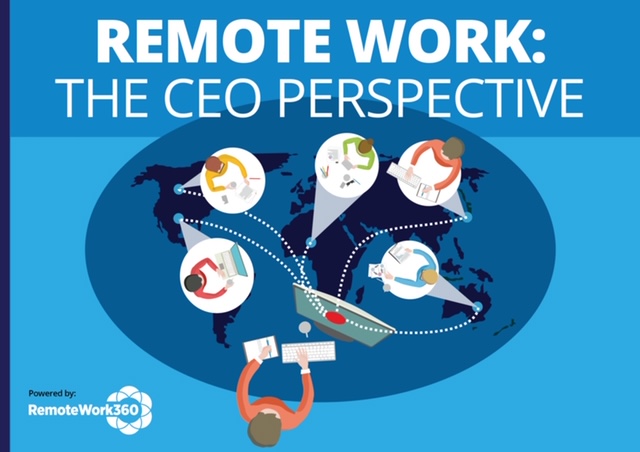5 Tips to Help Ensure Your Remote Workers Avoid Strain and Injury
- Home
- Supplier Directory
- Attendance & Monitoring
- Collaboration & Communication
- Cloud Telephony & VOIP
- Collaboration & Secure File Sharing
- Communication Software
- Creative Tools
- Culture Building
- Interactive presentations/screen sharing
- Messaging Tools
- Online Training
- Productivity
- Project Management
- Shared workspaces
- Time Tracking
- Video Conferencing
- Virtual Water Cooler
- Web Developer tools
- Finance/Accounting
- HR/Talent Management
- IT
- Managing Remote Teams
- Productivity
- Project Management
- Remote Workplace Wellness
- Sales & Marketing
- eNewsletter
- Events / Education
- About Us
- News
Remote Workplace Wellness
ByHeidi Williams
With so many polls and surveys showing that remote work trends will continue even after the covid19 pandemic, how can managers ensure that their remote workers are set up properly to avoid the aches and pains that can lead to long term strain or injury ? Leading ergonomics author, David Bernardi gives us his top tips:
Remote Work Agreement
If you haven’t already, establish a remote work agreement that outlines the expectations and hours of the workday. Most remote workers (83%, according to a recent Chubb poll) work the same or more hours at home than they do in the office. If the employee ignores proper ergonomic setup, poor postures sustained for longer periods of work without breaks will lead to musculoskeletal issues over time. By limiting work hours, the employer can help mitigate these risks.
Leverage Your Health & Safety Resources
Work with your EH&S department, safety committee or ergonomic team for a visual review of the remote worker’s workstation setup to ensure proper ergonomics. If you are a small company without an EH&S department, provide workstation infographics, online instruction tools or published ergonomic guidelines, all of which can be easily found online. Other sources of this information may include your insurance carrier, the staff nurse, your local physical therapy provider or a wellness vendor.
Ergonomic Equipment
Compile a list of acceptable ergonomic solutions and a pathway for employees to easily obtain such equipment. With the likely reduction in corporate real estate footprints, some companies are allowing employees to remove items such as chairs and monitors from the premises for home office use. Consider providing financial assistance / reimbursement up to a specific dollar amount with proof of the items purchased and/or visual documentation of proper implementation. Partner with local specialists or online vendors who can provide advice, service, support and rapid turnaround. Some companies offer dedicated intranet resources for their employees to rate and review their own experiences with particular vendors and/or equipment to help the colleagues make more-educated choices.
Encourage Movement Throughout the Workday
Providing time and outlets for employees to move and exercise demonstrates a commitment to their long-term health. Opportunities for movement may include standing staff meetings and/or zoom calls, brief walks after lunch, virtual yoga sessions or other fitness classes. Providing resources such as Fitbits® & other movement monitors, reminder popups on computers via software, sit-stand desks and fitness challenges administered by your wellness vendor are additional means for encouraging movement. Care should be taken to ensure any initiatives are voluntary but also inclusive regardless of limitations or body-types.
Show Concern
Consider having managers schedule daily check-ins with employees, video conference for face to face interaction if possible. Ask how the employee is doing, both mentally and physically. It has been shown that in times of a business downturn, employees are more reticent to report any sort of issue, discomfort or otherwise. During the pandemic many physical ailments are thought to have been ignored
due to fear of going to their doctor or physical therapist’s office, and possibly risking exposure to the coronavirus. Encourage empathy from managers, and to build trust and rapport with employees. Employees are more likely to offer information if trust exists.
If daily check-ins are not possible, contact your wellness provider to administer health status questionnaires to the staff monthly or bimonthly thru their app. A simple 0-5 score or happy face to frowny face can provide great feedback and a means of monitoring change in status.
Lastly, instruct employees to contact EH&S or HR at the earliest sign of discomfort so that early intervention can happen in the form of an ergonomic assessment. Outcomes will always be more favorable and less costly the earlier an issue is reported.
For more information, visit https://summitergo.com/pages/principles-of-ergonomics or contact the writer at dbernardi@summitergo.com
Related Posts
An estimated 86.3% of San Francisco employees are working from home, the highest rate among 10 major ...
May 11, 2021
In the third instalment of her blog - you can catch the first, on maintaining creativity here and ...
January 22, 2021
The different “kinds” of remote: finding the right fit your business Covid-19 has turned our world ...
January 14, 2021
RemoteWork360
RemoteWork360.com is powered by Chief Executive Group, which exists to improve the performance of business leaders, build communities and strengthen society.
Latest Insights
COPYRIGHT ©2020 REMOTEWORK360. ALL RIGHTS RESERVED.



